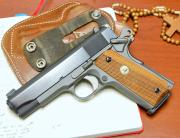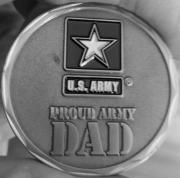So this before you talk or walk thing sounds good, like tough street cop stuff. I'd never heard it before this thread, and it sounds like a common thing in some parts. However, it is my opinion that It doesn't address the correct way to decock, and it doesn't take into account any kind of effective training principles.
The correct way to teach decocking, is to have the student decock as soon as they begin to break down their mount. Trigger finger goes into a high pinned register, and then they decock. Every time, all the time. Tons of one and two shot drills will give the reps needed.
This way, the �� is always decocked before it gets back to the chest, sometimes called position three. When the �� passes position 2, and begins to rotate down towards the holster, the thumb goes on to the hammer. Every time, all the time.
You cannot allow any leeway for where the decock happens, nor the thumb, nor the trigger finger, for that matter, or people will fail to do the right thing through no fault of their own.
Safety manipulation on 1911s and M4s works in a very similar fashion. For that matter, so does locking your car door.
Nothing is foolproof, but this is the best way to achieve the highest success in this area. There is slightly more to it than I wrote out, but hopefully that will give people some idea of how to go about training it correctly.



 Reply With Quote
Reply With Quote




